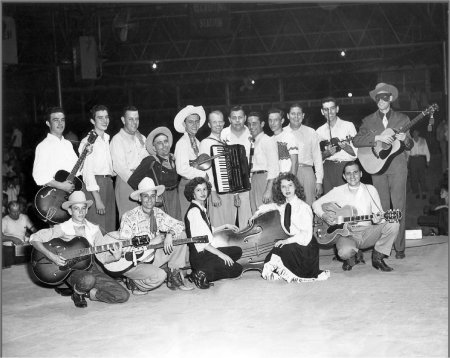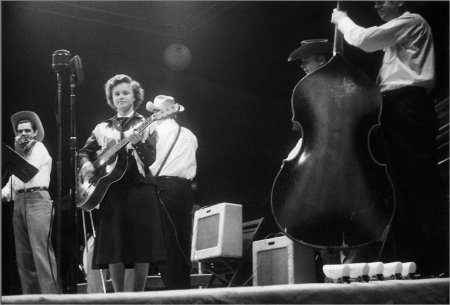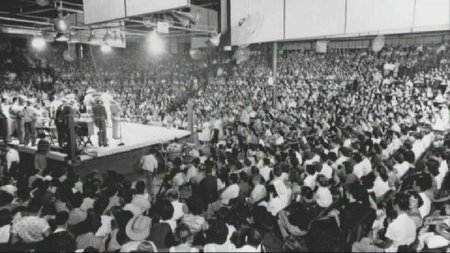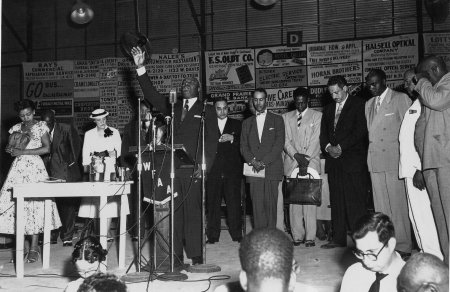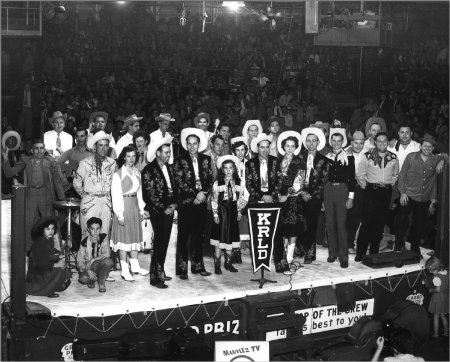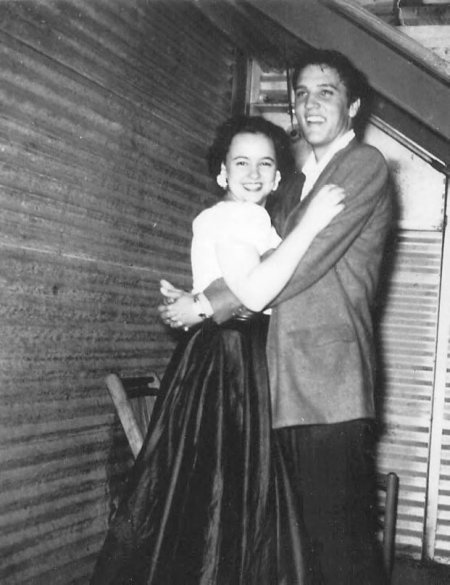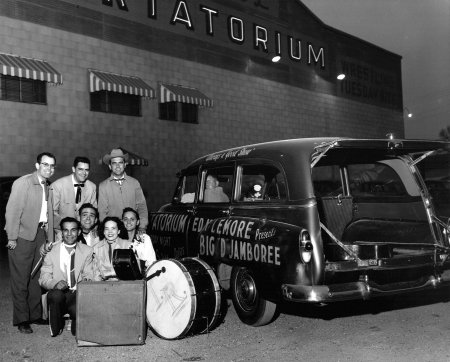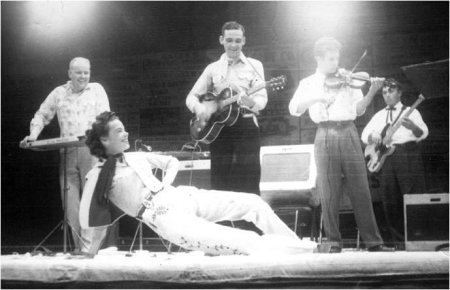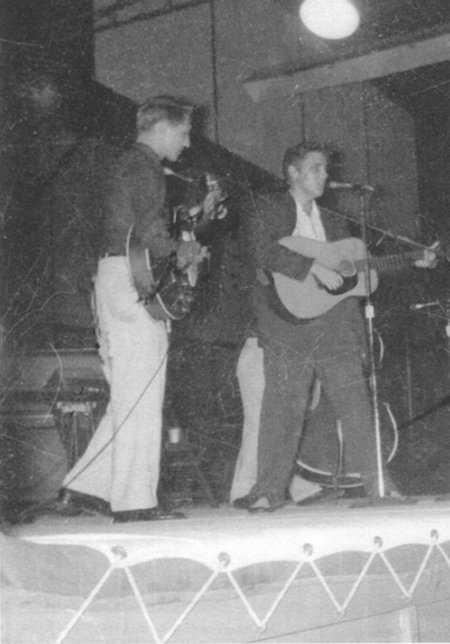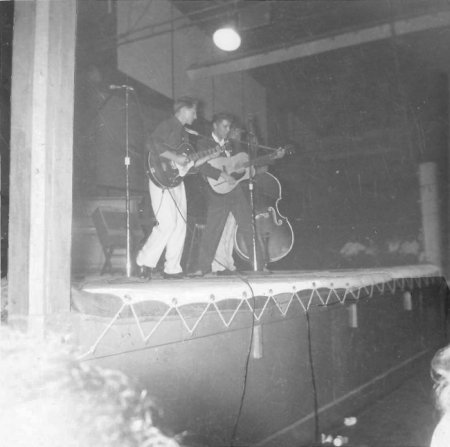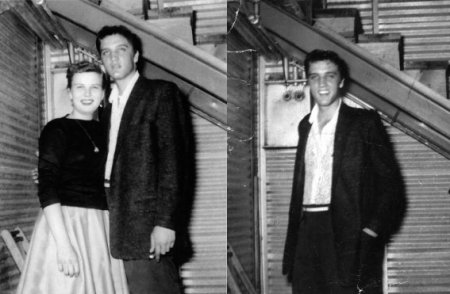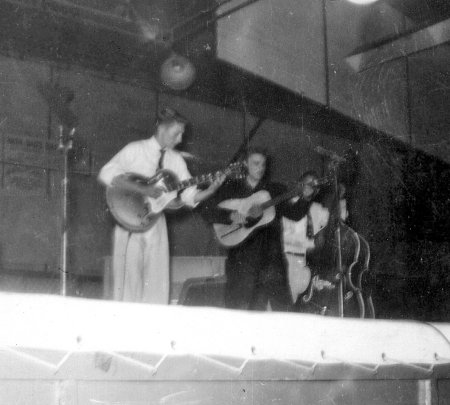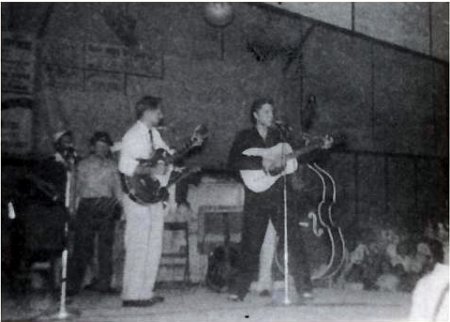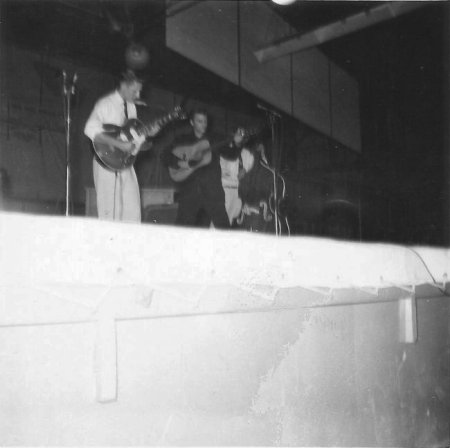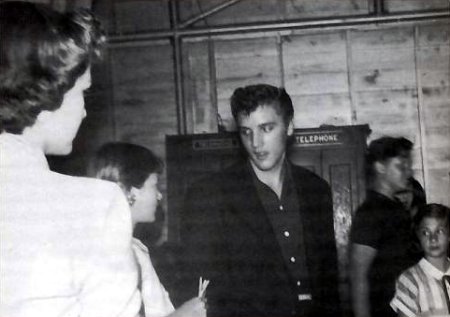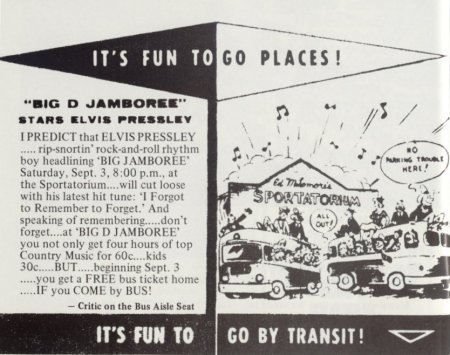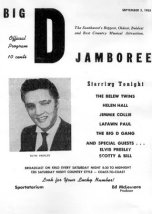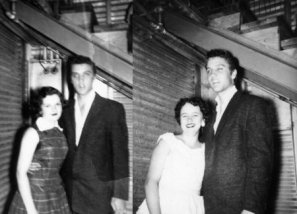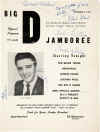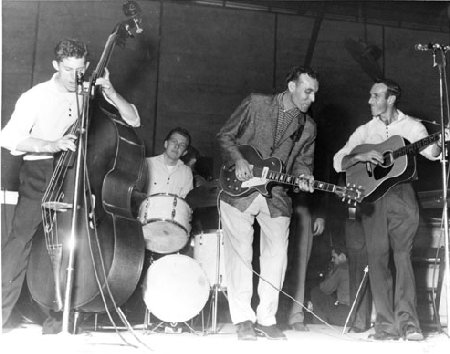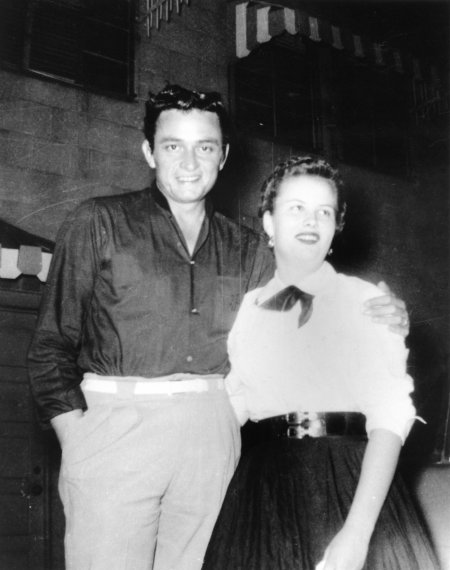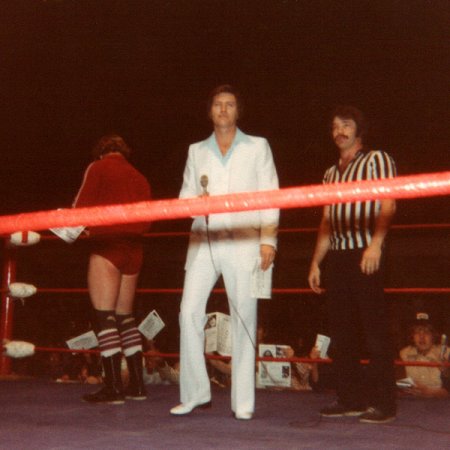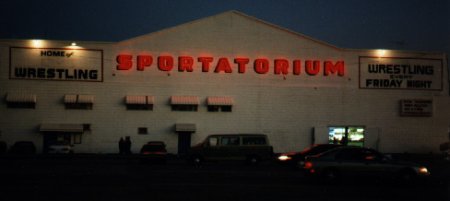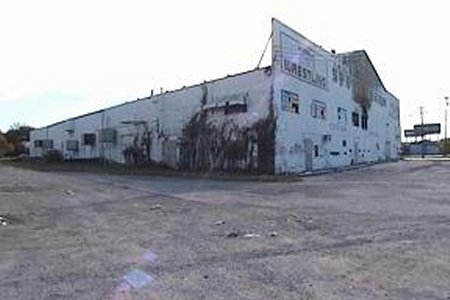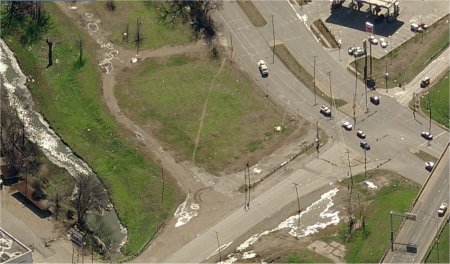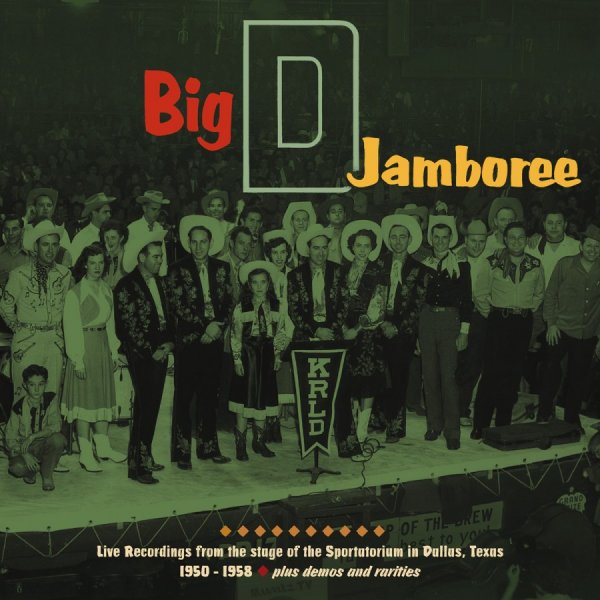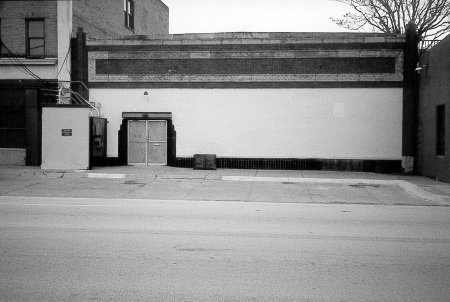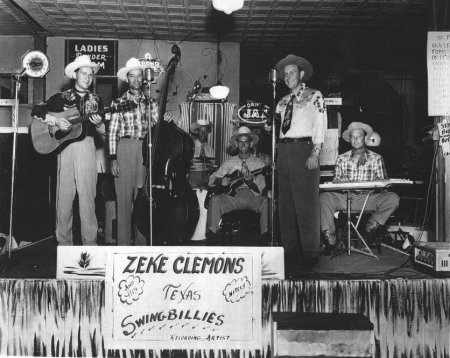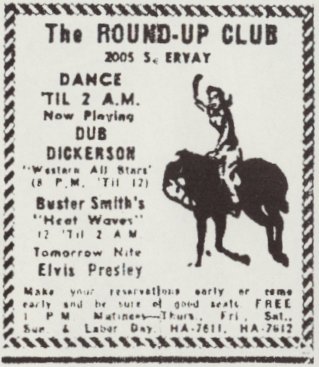 |
The Sportatorium Even a five year-old child could've sat in the front row of The Sportatorium and felt it. When the bell rang at 8:00 pm on Friday nights, that huge, silver, metallic building on the corner of Industrial Blvd. and Cadiz Street came alive!1
The original Dallas Sportatorium was constructed as an 8-sided steel structure, with a flat roof, built by Bill Cox of the Cox Fence Company. The first pro wrestling promoter in Dallas was a man named Burt Willoughby. Its inaugural wrestling event took place on December 9, 1935. The Sportatorium became one of the hottest tickets in the Southwest. Willoughby employed Ed McLemore to handle the concessions at the boxing and wrestling events.
When The National Wrestling Alliance (NWA) was still in it's infancy,
McLemore began promoting under the NWA banner at The Sportatorium. This
relationship lasted until January of 1953. The reason for the breakup is
unknown, but the NWA and The Sportatorium went their separate ways.1 The Sportatorium was also famous for another regular event, The Big D Jamboree. The Jamboree appeared there from 1948 until 1966 and was a live country music show held every Saturday night with stars of The Grand Ole Opry and Louisiana Hayride. For .65 cents, you could see musicians of this sort play live at between 8 PM and midnight. Promoted by Radio KRLD of Dallas, a CBS affiliate, portions of the weekly show were also broadcast over the radio from the Sportatorium. The first year of broadcast, it was billed as the Lone Star Barn Dance and they had about 20 performers. By early 1953, they had nearly 50 performers.
Since 1938, KRLD has broadcast at an effective radiated power of 50,000 watts, the highest allowed by the FCC and could be heard at night in 38 states. The call sign originated from the station's original owners, Dallas Radio Laboratories, transposed as Radio Laboratories of Dallas. KRLD was also used as the call sign of the CBS television affiliate KDFW-TV (channel 4) in Dallas from 1949 to 1970. KRLD also aired wrestling matches from the Sportatorium, with longtime sportscaster Bill Mercer calling the action.2
Bill Hines was the maintenance man at The Sportatorium from 1950 until 1988. “Back then you got a whole bus load of talent from Nashville for $500.” Bill said, “The great Hank Williams Sr. was here just three days before he died. Mr. Ed Watt came to work at The Sportatorium in 1953, booking the jamboree talent, and eventually became matchmaker for the wrestling events.” In the days when the crowds were segregated, “One section would be for blacks, and one section would be for whites. It rotated around the building.”1
Bill said he saw them all, "Hank Thompson, Sonny James, Johnny Cash, Lefty Frizzel, Charlie Walker, and of course my favorite 'The Possum' George Jones. Around 1954, the year after the building was rebuilt, Jamboree crowds started to decline.” Bill said, “Something called Rock and Roll started coming around."1
Charline Arthur was already a regular on the Jamboree when Elvis made his first appearance there and they would share many dates while touring with Hank Snow also. "For most of her life, Charline was viewed as a renegade. A Texas-born musician, she was a hard-living, feisty and opinionated woman - musically and physically aggressive onstage and off. She wore men's slacks and cowboy shirts. She leapt from stage amplifiers. She sang while lying down. In 1950 she landed a daily radio job at KERB in Kermit, Texas as both a DJ and singer. Colonel Parker had heard her and brought her to the attention of RCA Records in 1952. Because of her singles "Welcome to the Club," "Honey Bun" and "Burn That Candle," she is often cited as a pioneering rockabilly female. RCA dropped her in 1956, and, because of her reputation for being controversial and difficult, no other major record label took her in. In 1969 she revived her career, but arthritis in her hands forced her to retire. She died in her sleep at age 58 in 1987, never fully realizing her place in music history.3
In May of 1955 Elvis, Scotty and Bill made their second and third appearances at the Sportatorium. Though only initially booked for four appearances on the Jamboree they performed Saturday May 28th and then again on Sunday the 29th at 8:00 after appearing at the North Side Coliseum in Fort Worth for a 4:00 matinee that afternoon.
They returned again on June 18, 1955 two days before their appearances in Beaumont, that Ed McLemore had signed them to after their first appearance on the Jamboree in April. The July 16 issue of Billboard Magazine reported that they would be guesting again at the Jamboree on July 23 also. On September 3, 1955 they made their final appearance on the Jamboree and shared the bill with The Belew Twins, Helen Hall, Jimmie Collie, Lafawn Paul among others. Ads in the paper suggested using the Dallas Transit system to get there since parking could be a problem. They also performed at the The Round-Up Club later that evening.
Bill Hines said, "Promoters from New York staged one of the first R & R shows in the south right here at The Sportatorium. They were all here. One night a guitar picker broke his instrument, and he brought it to my workshop under the bleachers. I was able to get it fixed for him just in time for the show. He shook my hand and said his name was Chuck Berry. Ray Charles, Fats Domino, Jerry Lee Lewis, all stood under The Sportatorium spotlights.”1
i The Sportatorium eventually rejoined The NWA. It was about that time that a young local football player named Jack Adkisson appeared on the scene. Jack’s first paid job at The Sportatorium was working as a bookkeeper for Promoter McLemore. Adkisson was talked into trying pro wrestling and wrestled under the name Fritz Von Erich. Bill Hines said that as far as he knew, he, Bill, built the first cage ever to be used in a wrestling match, in 1962. “It was made out of two by fours with chicken wire around the sides, and barbed wire on top. It was for a match between NWA World Champion, “Nature Boy” Buddy Rogers and Duke Keomuka. Fritz Von Erich and Duke sold the Sportatorium out for a solid year, during that same time.”1
“The bloodiest match I can recall had to be between Fritz and Johnny Valentine.” Bill said, “Fritz took one of those wooden chairs and put 30 stitches in Johnny’s head! And then there was the night that Wahoo McDaniel was bouncing off the old hemp ropes, and the top one broke! The Chief landed in Section F, Row 3!” However, Bill added that his favorite story was the night he was closing down the building after a particularly wild night of matches. “As I walked around the top of the box seats, I noticed a man slumped over in his chair” Bill continued, “When I raised him up, there was a knife sticking out of his back right between the shoulder blades!”1
In late 1966, McLemore formed a partnership with wrestler Jack Adkisson about the time the Jamboree ended and in January 1968, McLemore suffered a heart attack and was no longer able to attend to the company's day-to-day business; he died on January 9, 1969, leaving Adkisson in charge. Adkisson's promotion, which became known in the early 1980s as World Class Championship Wrestling and featured his sons as its top stars, was the most famous and successful wrestling federation to run regularly at the Dallas Sportatorium.2
After WCCW folded in 1990 due to dwindling attendance, fundamental changes in the wrestling industry and tragedies involving a number of its top stars (including all but one of the Von Erichs, Gino Hernandez, and Bruiser Brody), the Sportatorium served as home base for the Global Wrestling Federation from 1991 to 1994 (billing itself for a time as the GlobalDome). Following the GWF's demise, a succession of smaller promotions attempted to hold shows in the building, each of them running out of money and closing their doors after only a short time.2
The Sportatorium fell into disuse in the late 1990s when local independent wrestling promotions, by now drawing crowds only in the low hundreds, elected to run their shows in dance halls and other smaller venues instead. In addition, the aging arena was seriously dilapidated by this time, was out of compliance with local building codes, and was often used as a shelter by homeless people who entered the building illegally.2
In late December 2001 some of these individuals, apparently seeking respite from sub-freezing temperatures, started a fire inside the building; the flames quickly spread and caused major damage to the arena's upstairs offices. The fire proved to be the coup de grâce for the Sportatorium, its long-rumored demolition finally taking place in the spring of 2003. Before its implosion, Kevin Von Erich took off a bench-seat and a few items from the Sportatorium as souvenirs, which he still owns today. Kevin took one final tour of the historic arena, which was featured in its famed DVD documentary Heroes of World Class, released in 2006.2
Although it had a reputation for being notoriously uncomfortable and unsanitary (having woefully inadequate heating and cooling facilities, and severe rodent infestation problems), the Dallas Sportatorium is nonetheless still remembered fondly for its intimate atmosphere, and is considered one of pro wrestling's most legendary venues.2 page added January 27, 2008 Special thanks to Steve Bonner again for his contributions and the use of his photos.
1 excerpted Percy
Pringle's
section added September 13, 2013
|
||||||
|
All photos on this site (that we didn't borrow) unless otherwise indicated are the property of either Scotty Moore or James V. Roy and unauthorized use or reproduction is prohibited. |
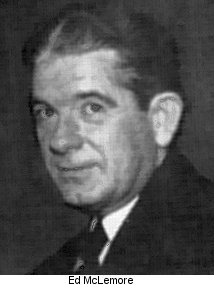 Ed McLemore started out handling the popcorn, then the cold drinks, and then
the hot dogs; before Willoughby knew it, he had the entire
concession business to himself. McLemore advanced in Willoughby’s
company until he owned the entire business in 1940.1
Ed McLemore started out handling the popcorn, then the cold drinks, and then
the hot dogs; before Willoughby knew it, he had the entire
concession business to himself. McLemore advanced in Willoughby’s
company until he owned the entire business in 1940.1